Carbon-Carbon Multiple Bonds: Structure and Function
A Carolina EssentialsTM Activity

Total Time: 45-60 mins
Prep: 15 mins | Activity: 30-45 mins | Research: 120 min

Physical Science | Chemistry
9-12
High School
Overview
This is a modeling activity designed for pairs of students where students use molecular models to construct a simple 2-carbon alkane, then convert it to a 2-carbon alkene and 2-carbon alkyne. After observing changes in structure among the 2-carbon series, students will use molecular models to investigate the myriad of structures for polyethylene, one of the most common, multipurpose plastics found in their daily lives.
Phenomenon
All these items are made from the same basic unit, ethylene. What do you think allows for the wide variety of properties among the materials?

Essential Question
Why is the molecular-level structure important in the functioning of designed materials?
Activity Objectives
- Build models then describe how double and triple carbon-to-carbon bonds change the structure of ethane.
- Using the monomer, ethylene, design 3 polymer molecular structures and explain how the structure may influence properties and functions.
Next Generation Science Standards* (NGSS)
PE HS-PS2-6. Communicate scientific and technical information about why the molecular-level structure is important in the functioning of designed materials.
SCIENCE & ENGINEERING PRACTICES
Obtaining, Evaluating, and Communicating Information
- Communicate scientific and technical information (e.g., about the process of development and the design and performance of a proposed process or system) in multiple formats (including oral, graphical, textual and mathematical).
DISCIPLINARY CORE IDEA
PS2.B: Types of Interactions
- Attraction and repulsion between electric charges at the atomic scale explain the structure, properties, and transformations of matter, as well as the contact forces between material objects.
CROSSCUTTING CONCEPTS
Structure and Function
- Investigating or designing new systems or structures requires a detailed examination of the properties of different materials, the structures of different components, and connections of components to reveal its function and/or solve a problem.
Materials
Safety and Disposal
No PPE is required for the activity.
Teacher Preparation and Disposal
Copy or upload student activity page. There is no disposal of waste materials.
STUDENT PROCEDURES
- Build a model of the ethane molecule C2H6. All valence level electrons are accounted for in bonds.
- Make a 3-dimensional sketch of the model.
- Build a model of the ethene molecule C2H4. All valence level electrons are accounted for in bonds.
- Make a 3-dimensional sketch of the model.
- Build a model of the ethene molecule C2H2. All valence level electrons are accounted for in bonds.
- Make a 3-dimensional sketch of the model.
- Design polyethylene structures that would function as a foam, film, and rigid solid. To simplify your design, use 10 to 15 monomers of ethylene. See the monomer structure for ethylene in the background.
TEACHER PREPARATION AND TIPS
- As students build the models, remind them that all electrons must be bonded. There will be no vacant holes on the carbon atoms.
- Use the longer, flexible bonds for the carbon-to-carbon bonds.
- You may also ask students to include a structural model with their sketch.
- Tell students to be creative. Think about the functions of the items in the collage. If a material stretches, will it have a complex network design? What does it take to make a rigid solid? Check for the bonding between ethylene monomers.
Data and Observations

Polyethylene
Drawings will vary. Guide students toward a long chain, a chain with a couple of branches, a chain with many branches, or a chain with cross-links. Bonding rules still apply.
Analysis & Discussion
Moving from ethane to ethyne, describe what happened to the ratio of carbon to hydrogen atoms and how the change affected the structure of the molecule. You may insert your diagrams as evidence of changes.
From ethane to ethene, two hydrogens were lost. The ratio went from 2C:6H (or 1:3) to 2C:4H (or 1:2). From ethene to ethyne another 2 hydrogens were lost making the ratio 2C:2H (or 1:1). Structurally, ethane is a 3-dimensional molecule and looks like 2 pyramids, (tetrahedrons) are stuck together. Ethene has the double bond which flattens the molecule so that it looks planar in the model. Ethyne has the triple bond and 2 less electrons and the structure looks linear.
In a well-written statement, explain why each of your polyethylene structures will function as a foam, film, or rigid solid.
Student answers will vary but they may say a long single chain of monomers should be stretchy, highly cross-linked molecules would be rigid, and structures with lots of open space or pore space will be a foam. They will investigate the actual polymer shapes in assessment 3 and evaluate their own designs.
Check your design skills. Research the types of polyethylene, their structures, and uses then write a detailed explanation of at least three types. Evaluate the design of your ethylene polymers for structure and function based on your research.
Student answers will vary. Check for three different polyethylene variations. Some options include:
- Ultra-high-molecular-weight polyethylene- UHMWPE
- High-density polyethylene-HDPE
- Cross-linked polyethylene- PEX or XLPE
- Medium-density polyethylene- MDPE
- Linear low-density polyethylene- LLDPE
- Low-density polyethylene-LDPE
- Very-low-density polyethylene- VLDPE
Look for an evaluation of all three of their designed polymers.
SHOP THE KIT
ADDITIONAL REFERENCE KITS
SAFETY REQUIREMENTS
- No PPE is required for this activity.
HELPFUL LINKS
VIEW MORE ESSENTIALS
*Next Generation Science Standards® is a registered trademark of Achieve. Neither Achieve nor the lead states and partners that developed the Next Generation Science Standards were involved in the production of, and do not endorse, these products.




